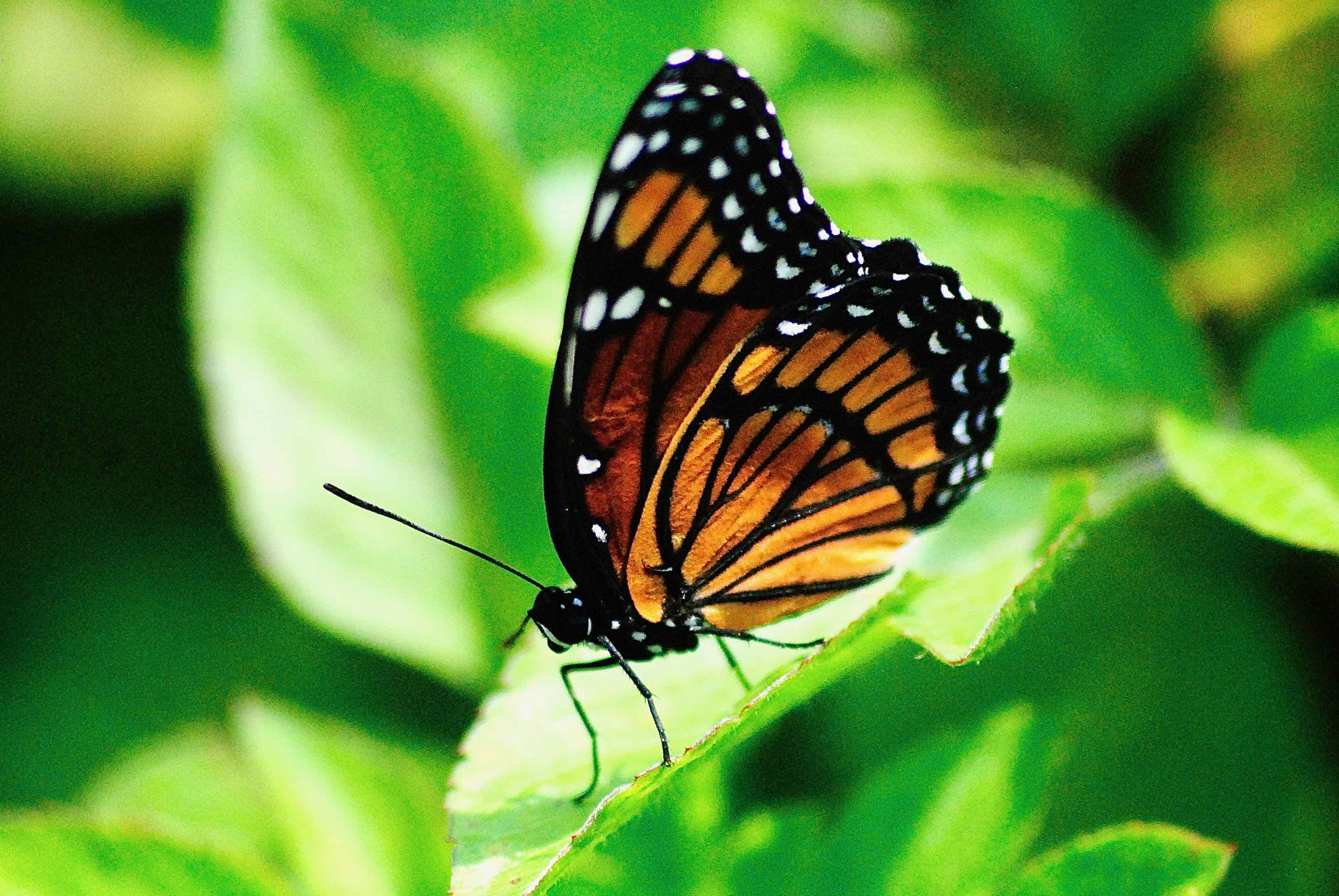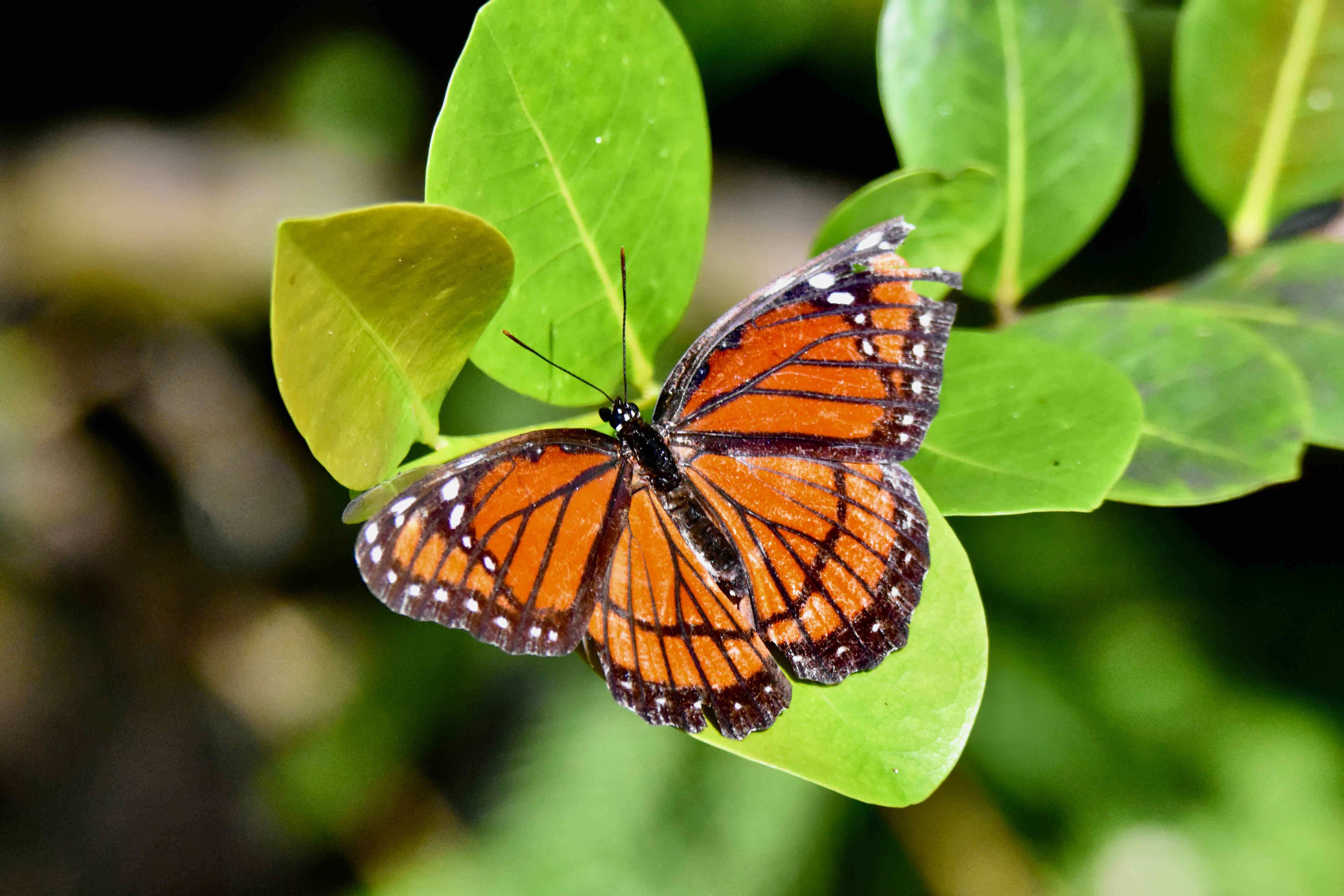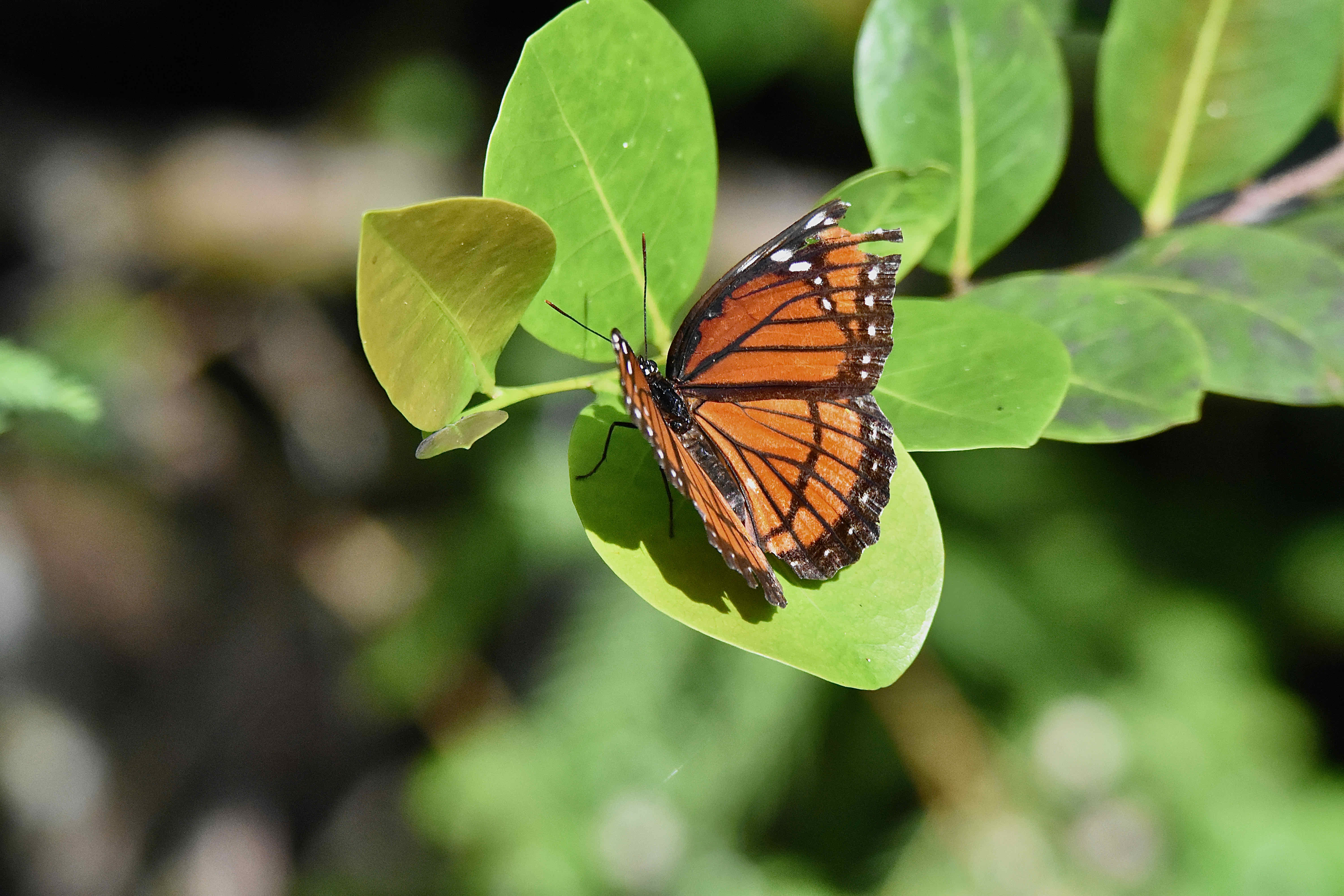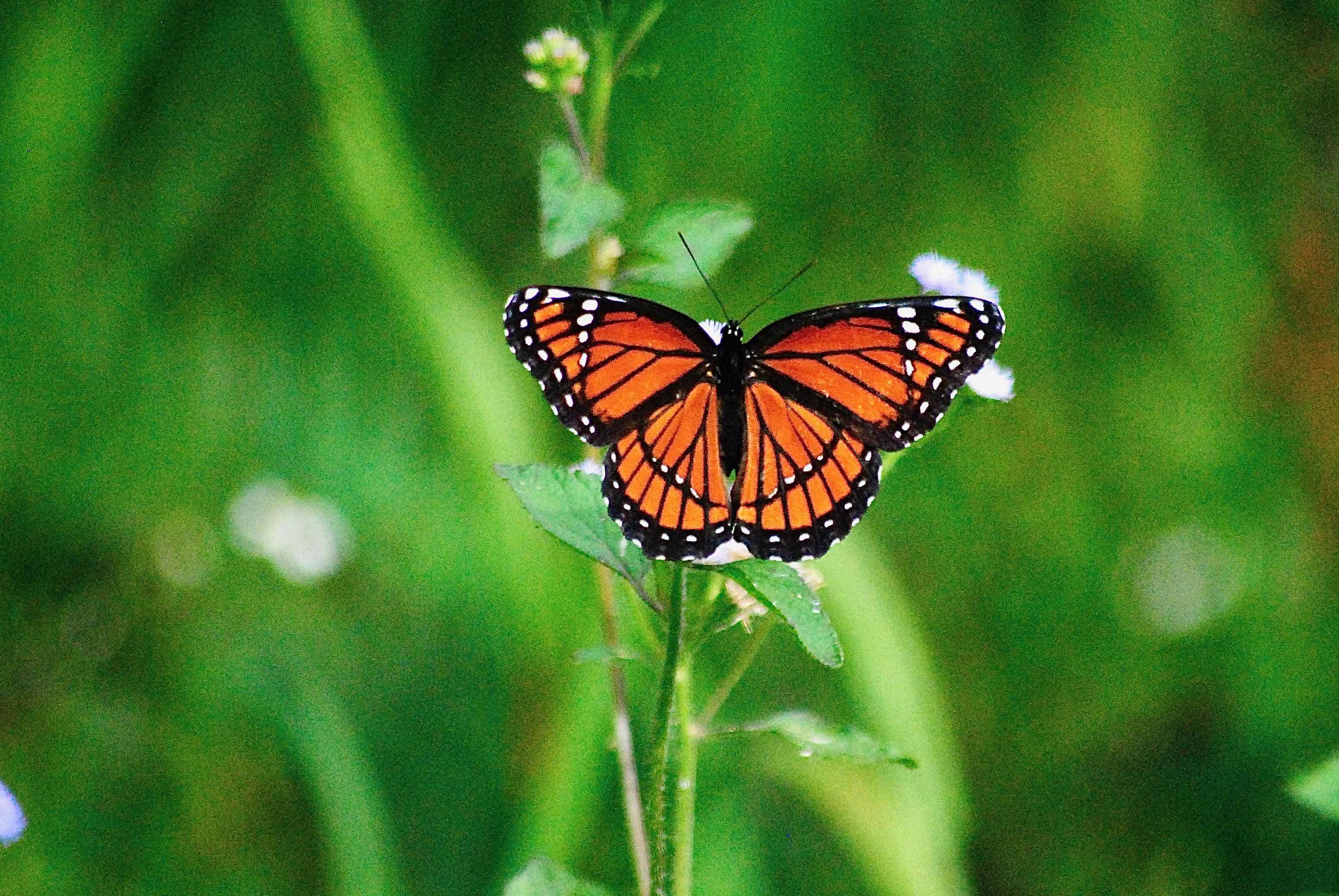
Viceroy butterfly, photographed at Fern Forest Nature Center, Coconut Creek, Broward County, in May 2014.
The viceroy butterfly, Limentis archippus, is an imposter. Then again, maybe he's for real, and if you're a hungry bird, you probably don't want to risk finding out. And that's really the point. We're talking about mimicry here, and the eat-me-and-you'll-die defense that some creatures, particularly butterflies, employ to ward off predators.
The first thing you notice about the viceroy is how it resembles the monarch butterfly. The colors are the same and the wing patterns are similar. Both are members of the Nymphalidae family, as is a third butterfly we'll talk about here, the queen, but despite the similarities, the two are not closely related. Viceroys are slightly smaller, but the most obvious way to tell the two species apart is the arcing line on the hind wings, seen in the photos below. Monarchs don't have that; viceroys do. But otherwise, the similarities between the two butterflies are important to the viceroy's survival. Viceroys have a wingspan between two-and-a-half and three-and-a-half inches. It ranges as far north as Canada's Northwest Territories, southward along western mountain ranges, through all of the eastern United States, southward into Florida and Mexico.
Monarchs lay their eggs on various milkweeds; their caterpillars will eat the leaves of the host; viceroys likewise select willows, poplars and cottonwoods, all members of Salicaceae and all high in solicylic acid, the stuff from which aspirin is derived. Females lay their eggs on the tips of the leaves, usually no more than two or three per plant. According to Butterflies and Moths of North America, caterpillars eat their shells, then go to work eating the leaves of the host. Caterpillers make a ball of poop, bits of leaf and silk and dangle it from the leaf they are munching on, possibly to distract predators.
The diets of adults vary according to the time of year (although we're guessing not so much here in Florida because of our warmer climate). Early in the season, when the first generation of the year emerges, viceroys will make up for the limited number of available flowers by dining on the honeydew of aphids, dead animals, dung and decaying fungi. As the season progresses, later generations will nectar on asters, goldenrod, joe-pye weed, Spanish needles, thistles etc. Viceroys like moist habitats, hanging out on the edges of swamps, wetlands, wet meadows and roadsides. In northern parts of its range, viceroys will produce two or three generations during a season. In Florida, they reproduce year round.
The interesting thing about the viceroy is that its color varies according to the population of other butterfly species in territories that it inhabits. In places where monarchs are common, it will copy the monarch's deep orange. Where monarchs are rare, and queen butterflies are common, it will pick up the brownish orange of the queen.
The variations matter, because the monarch, the queen as well as the viceroy are practitioners of the eat-me-and-you-die defense. The idea isn't so much to kill the hungry predator but rather make him so sick that it won't ever touch a member of that species or anything that looks like it again. Aversion therapy if you will, and the viceroy, in order to play the game, needs to blend in with the other two. Their bright colors signal predators, birds in particular, to stay away and find lunch elsewhere. By mimicking the colors of the dominant species in a particular area, the viceroys (and other orange-colored butterflies) are piggy-backing on their defenses.
In some cases, one butterfly species might be an imposter — it might have the same colors as an eat-me-and-you-die butterfly, mimicking its looks, but without the same deadly effect on predators, really relying on the other species for its defense. This is called Batesian mimicry, named after 19th century English naturalist Henry Walter Bates. But in the case of monarchs and viceroys and queens, the mimicry contributes to the defense of all three. Monarchs, of course, acquire cardenolide poisons by eating milkweeds as caterpillars. Same with queens. Likewise, viceroys give predators headaches because of all the solicylic acid they take in as from their days munching on willows et al. This kind of mimicry is called Mullerian, after 19th century German naturalist Johann Friedrich Theodor "Fritz" Muller. Your science lesson (and mine) for the day.
A few decades ago, there was some thinking that viceroys were Batesian micmickers. But a study done in 1991 at the University of Florida actually found viceroys more distasteful to birds than queens. Researchers fed the abdomens of the two butterflies to red-winged blackbirds and observed that only 40 percent of the viceroys were eaten compared with 98 percent of all butterflies and 65 per cent of the queens. One-third of the viceroys were rejected after a single peck compared with 14 percent of queens.



